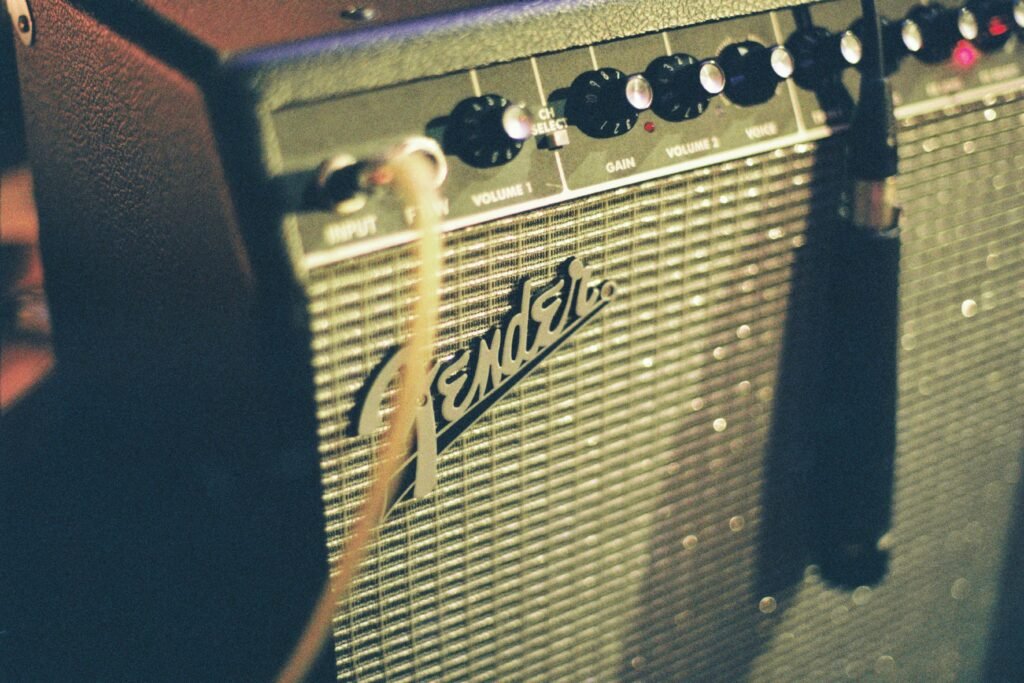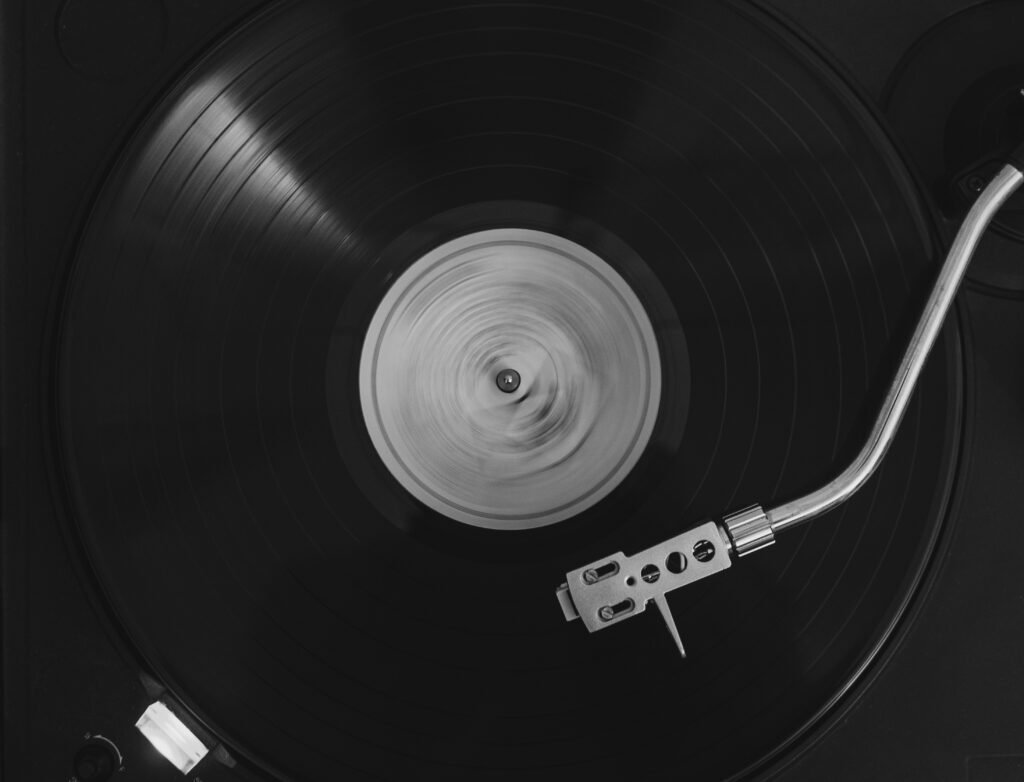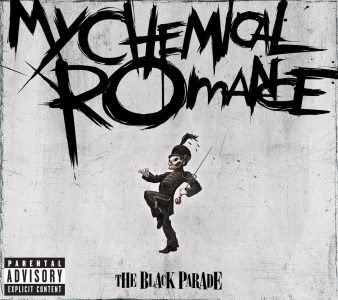Released in 2006, The Black Parade stands as a defining moment in My Chemical Romance’s discography. Positioned between the raw, emotionally charged punk of Three Cheers for Sweet Revenge and the theatrical glam rock of Danger Days, this third studio album represents both an evolution and a bold departure. It trades the grit of their early work for grandiosity, drawing heavily on classic rock influences like Queen and Pink Floyd to build a rock opera that is as ambitious as it is polarizing.
At its core, The Black Parade is more than just a collection of songs. It’s a conceptual journey centered around “The Patient,” a dying protagonist who reflects on life, death, and what comes after. In interviews around the album’s release, frontman Gerard Way described it as a chance to push the band’s limits artistically while also paying homage to the kind of arena rock they grew up admiring. The record seeks to balance theatrical excess with emotional sincerity, weaving personal pain into elaborate compositions. While some critics saw this as a masterstroke of modern emo, others viewed it as self-indulgent.
Sonic Exploration

From its opening notes to its final fade-out, The Black Parade is a sonic spectacle. The production, handled by Rob Cavallo—best known for his work with Green Day—is polished and expansive. Every instrument has its space, yet nothing feels sterile. Cavallo’s experience in balancing punk energy with mainstream clarity shines through. The mix is clean without sacrificing emotional weight, which is key for an album that flirts so openly with drama.
Musically, The Black Parade is rich with theatrical flair. Strings swell, horns blare, and piano lines meander through the noise like ghostly narrators. The arrangements often feel like mini-plays, with movements that build, collapse, and rise again. Tracks like “Welcome to the Black Parade” shift gears midway through, starting with a lonely piano and ending in a stadium-shaking anthem. Elsewhere, “Mama” leans into vaudevillian chaos, complete with marching drums and a near-operatic delivery. It’s not just rock—this is rock dressed up in full costume, with the spotlight firmly on.
Genre-wise, the album is rooted in emo and alternative rock, but it pulls liberally from punk, glam, and even metal. There are nods to classic rock’s theatricality, especially in the vocal layering and guitar solos. At times, this genre-blending feels exhilarating. But it can also feel overreaching, as if the band is stretching to fit too many styles into a single canvas. Some moments lack cohesion, causing emotional peaks to lose impact amid the spectacle.
Lyrical Analysis

Lyrically, The Black Parade is steeped in themes of mortality, loss, and the search for meaning at the end of life. Its conceptual backbone—the journey of “The Patient” as he confronts death—gives the album a narrative arc that is both personal and theatrical. Death isn’t treated as a finality here, but as a passage filled with reflection, regret, and at times, rebellion. Songs like “Cancer” strip everything down to raw vulnerability, presenting illness in stark, unfiltered terms, while “Dead!” cloaks its morbid subject in a sarcastic, upbeat package that blurs the line between coping and mockery.
Recurring motifs like hospitals, parades, and family traumas appear throughout, stitching the album together like scenes from a dark musical. The use of the parade itself as a metaphor for death—something grand and inescapable—adds a poetic weight to the project. Gerard Way’s lyrics often sit somewhere between confessional and fantastical. He paints vivid, almost comic book-like scenes, but roots them in emotional truth. This balance keeps the album from feeling like pure performance.
Lyrical Depth
The lyrical complexity varies. Some songs hit with direct, gut-wrenching honesty. “I’m just a man, I’m not a hero” from “Welcome to the Black Parade” is a line that echoes long after the music fades. Others veer into melodrama, with metaphors that can feel overwrought or performative. In tracks like “Sleep” and “The End.,” the language turns inward, exploring existential dread with almost feverish intensity.
Yet, even when the lyrics feel excessive, they rarely feel hollow. The emotional core of the album is always beating, sometimes faintly and sometimes at full throttle. This emotional intensity is what makes the album resonate for many listeners. It invites empathy and contemplation, especially for those who’ve brushed against grief, illness, or the fragility of life. The words aren’t just part of the spectacle—they’re part of the mourning.
Cohesion and Flow

The Black Parade aims for a cohesive, narrative-driven experience, and for the most part, it succeeds. The album opens with “The End.” and “Dead!,” a one-two punch that sets the tone both musically and thematically. These tracks ease the listener into the concept—death as both literal and theatrical—before diving deeper into the emotional trenches. The transition from the defiance of “This Is How I Disappear” to the raw confession of “Cancer” is jarring in content, but intentional in its emotional arc. Each song feels like a chapter in a larger story, contributing to the overall progression of “The Patient’s” journey.
The centerpiece, “Welcome to the Black Parade,” serves as the album’s emotional and narrative fulcrum. It’s the moment the concept fully reveals itself, pivoting from introspection to a grand, almost mythic confrontation with mortality. From there, the album oscillates between reflective ballads and chaotic outbursts. While this creates dramatic tension, it can also disrupt the flow. Tracks like “Teenagers” and “Mama” add color but shift in tone so sharply they momentarily pull the listener out of the overarching mood. “Teenagers,” in particular, feels like a stylistic outlier, more in line with a standalone single than a key narrative piece.
Despite these dips, the thematic threads remain mostly intact. The specter of death, the confusion of identity, and the urgency of legacy continue to echo from track to track. The closing songs—“Disenchanted” and “Famous Last Words”—bring the narrative full circle with emotional finality. The former laments disillusionment, while the latter reaffirms resilience. This ending provides a satisfying sense of closure, even if the journey there sometimes meanders.
Standout Tracks and Moments
Several tracks on The Black Parade shine not just within the context of the album, but as standout pieces in My Chemical Romance’s entire catalog.
Welcome to the Black Parade
“Welcome to the Black Parade” is the most obvious highlight. It encapsulates the album’s ambition, moving from a soft piano intro to a bombastic anthem of defiance. Its structure is complex yet accessible, and Gerard Way’s vocal performance carries a sense of both urgency and theatrical poise. The moment when the full band crashes in—“When I was a young boy…”—is as iconic as it is emotionally charged.
Cancer
“Cancer” offers a stark contrast, stripping back the layers for a devastatingly intimate portrayal of illness and impending loss. Its brevity makes it hit harder, and the rawness in Way’s delivery is unforgettable. It’s not a technical showpiece, but its impact lies in its restraint.
Mama
“Mama” deserves mention for its sheer audacity. It blends a cabaret-style swing with heavy guitars and layered vocals, featuring Liza Minnelli in a theatrical turn that pushes the album’s operatic qualities to their extreme. It’s a track that walks a tightrope between genius and chaos, and somehow never loses balance.
Famous Last Words
“Famous Last Words,” the album’s closer, delivers one of the most emotionally satisfying moments. The defiant line, “I am not afraid to keep on living,” stands as the record’s spiritual resolution. It’s a final burst of hope that reclaims agency in the face of despair.
Memorable Moments
Other memorable moments include the eerie spoken-word interlude in “Sleep,” which adds a layer of psychological tension, and the sudden tempo shifts in “Dead!” that keep listeners on edge. Even “Teenagers,” while thematically disjointed, showcases the band’s knack for catchy, sardonic hooks.
Artistic Contribution and Innovation

The Black Parade arrived at a time when emo and alternative rock were teetering between underground subcultures and mainstream attention. In this context, My Chemical Romance’s third album was both a bold outlier and a commercial catalyst. It took the emotional volatility of early 2000s emo and infused it with a level of theatrical ambition rarely seen in the genre. This was not just another dark, introspective record—it was a rock opera, complete with character arcs, stage personas, and a sweeping narrative structure.
In terms of artistic contribution, the album expanded the boundaries of what emo could be. While peers were still rooted in punk minimalism or pop-punk catchiness, The Black Parade reached back to the grandiosity of 70s rock and fused it with modern anxieties. It challenged the idea that emo had to be lo-fi or intimate. Here was a band unafraid to go big, both sonically and visually, without abandoning emotional authenticity.
Innovation
Innovation shines most clearly in the album’s ability to straddle multiple genres without feeling disjointed. The fusion of punk energy, glam rock theatricality, and classic rock structure resulted in a sound that was both nostalgic and new. The use of recurring motifs—lyrical and musical—helped create a layered experience that rewarded multiple listens. Tracks like “Mama” and “Sleep” push the envelope further, experimenting with form, dynamics, and mood in ways that weren’t common in the genre at the time.
Even the marketing and visual presentation of the album contributed to its impact. The band’s transformation into a death-marching military ensemble became iconic, reinforcing the album’s themes of mortality and transformation. It wasn’t just music—it was a full artistic statement, blurring the lines between concept album and theatrical performance.
Though some critics questioned whether the album’s ambition overshadowed its substance, its influence is hard to deny. The Black Parade helped usher in a wave of more theatrically minded rock acts and remains a touchstone for artists looking to marry concept with accessibility.
Closing Thoughts

The Black Parade is a daring and emotionally charged statement from My Chemical Romance—an album that swings for the fences in almost every direction. Its greatest strength lies in its ambition. Few records in the emo or alternative rock scenes have aimed for such theatrical heights, and even fewer have done so with this level of polish. The production is crisp and deliberate, the arrangements are imaginative, and the thematic depth is clear, if occasionally heavy-handed.
At its best, the album delivers moments of raw emotional honesty, wrapped in soaring anthems and unexpected sonic turns. Tracks like “Welcome to the Black Parade,” “Cancer,” and “Famous Last Words” remain defining pieces not just for the band, but for the mid-2000s rock landscape. Yet, this same ambition can be its Achilles’ heel. Some songs feel overly stylized or tonally mismatched, pulling the listener out of the narrative flow. The genre-hopping, while bold, sometimes feels more like performance than cohesion.
Still, The Black Parade stands as a turning point in My Chemical Romance’s career. It elevated them from cult status to arena-filling icons and expanded the possibilities for what a rock album could look and sound like in the 21st century. It may not land every punch, but it earns respect for taking the swing.
Official Rating: 7/10
This score reflects a well-crafted, emotionally resonant album that pushed boundaries and left a lasting cultural imprint, even if it occasionally buckled under the weight of its own ambition. For many listeners, it will always be more than just music—it’s a full-blown experience.
